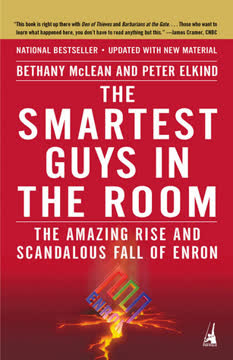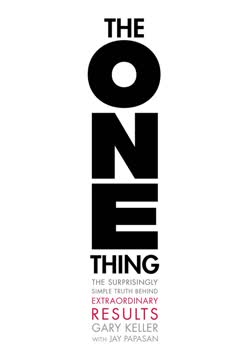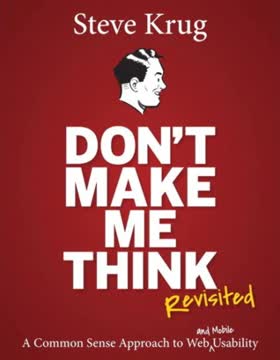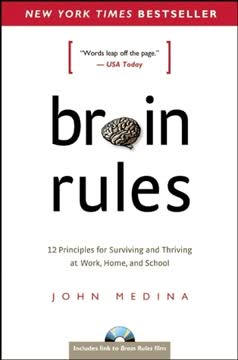Key Takeaways
1. Small is the new big: Embrace agility and innovation
"Big used to matter. Big meant economies of scale... Now, little companies often make more money than big companies."
Agility trumps size. In today's fast-paced business environment, small companies have a distinct advantage. They can adapt quickly, make decisions faster, and innovate without the bureaucratic hurdles that plague larger organizations. This shift is driven by:
- Technological advancements that level the playing field
- Changing consumer preferences favoring authenticity and personalization
- The ability to outsource non-core functions, reducing overhead
Small companies can focus on creating remarkable products and services, building strong customer relationships, and responding rapidly to market changes. They can also tap into niche markets that larger companies might overlook or find unprofitable.
2. Marketing is about remarkable ideas, not interruptions
"Marketing that works is marketing that people choose to notice."
Create, don't interrupt. Traditional marketing relied heavily on interrupting people with advertisements. Today, effective marketing is about creating ideas, products, and services so remarkable that people actively seek them out and share them with others. This shift is driven by:
- Information overload: Consumers are bombarded with thousands of marketing messages daily
- Rise of ad-blocking technology and subscription-based, ad-free content
- Increased consumer skepticism towards traditional advertising
Successful marketers focus on:
- Creating products worth talking about
- Building engaged communities around their brands
- Leveraging word-of-mouth and viral marketing
- Providing value through content marketing and thought leadership
3. Tell authentic stories that resonate with your audience
"The best stories change over time. They change in ways that fascinate the consumer, and, more important, they change in ways that are fun or interesting to talk about."
Authenticity builds connections. In a world saturated with marketing messages, authentic storytelling cuts through the noise and creates meaningful connections with your audience. Effective storytelling:
- Aligns with your brand values and mission
- Addresses your audience's needs, desires, and pain points
- Evolves over time to keep your audience engaged
- Encourages sharing and discussion
Craft your brand's narrative carefully, ensuring consistency across all touchpoints. Use customer testimonials, behind-the-scenes content, and origin stories to humanize your brand and build trust.
4. Focus on creating products people want, not just selling
"Make something worth making. Sell something worth talking about."
Innovation drives success. Instead of focusing solely on sales tactics, successful companies prioritize creating products and services that truly meet customer needs and desires. This approach:
- Generates organic word-of-mouth marketing
- Builds brand loyalty and repeat customers
- Reduces the need for aggressive sales tactics
To create products worth talking about:
- Deeply understand your target audience's needs and pain points
- Continuously innovate and improve based on customer feedback
- Focus on solving problems in unique and remarkable ways
- Don't be afraid to challenge industry norms and expectations
5. Embrace change and take calculated risks
"Safe is risky."
Stagnation is death. In a rapidly evolving business landscape, playing it safe can be the riskiest strategy of all. Companies that resist change often find themselves obsolete, while those that embrace it thrive. To stay ahead:
- Cultivate a culture of innovation and experimentation
- Encourage calculated risk-taking and learn from failures
- Stay attuned to industry trends and emerging technologies
- Be willing to cannibalize your own products before competitors do
Remember that change doesn't always mean radical transformation. Sometimes, small, incremental improvements can lead to significant long-term gains. The key is to maintain a mindset of continuous improvement and adaptation.
6. Build trust and respect through consistent actions
"Respect is the secret to success in dealing with people."
Actions speak louder than words. In an era of increased transparency and instant communication, building and maintaining trust is crucial for long-term success. Trust is earned through:
- Consistently delivering on promises
- Treating customers, employees, and partners with respect
- Being transparent about your business practices and values
- Admitting and rectifying mistakes quickly
Businesses that prioritize trust and respect:
- Enjoy higher customer loyalty and retention
- Attract and retain top talent
- Build stronger partnerships and collaborations
- Weather crises more effectively due to accumulated goodwill
7. Measure everything and optimize for efficiency
"Measurement increases speed."
Data-driven decisions win. In the digital age, nearly everything can be measured and analyzed. Successful companies leverage this data to make informed decisions and continuously improve their operations. Key aspects of this approach include:
- Setting clear, measurable goals for all initiatives
- Implementing robust tracking and analytics systems
- Regularly reviewing and analyzing data to identify trends and opportunities
- Using A/B testing to optimize marketing, product features, and user experience
By embracing a data-driven culture, companies can:
- Allocate resources more effectively
- Identify and solve problems quickly
- Make more accurate predictions about future trends
- Continuously improve their products and services based on real user feedback
8. Create a unique voice that stands out in the marketplace
"All businesses are service businesses, and experience is the product."
Differentiation is key. In crowded markets, having a unique and consistent brand voice helps you stand out and connect with your target audience. Your brand voice should:
- Reflect your company's values and personality
- Be consistent across all touchpoints (website, social media, customer service, etc.)
- Resonate with your target audience's preferences and expectations
- Evolve over time while maintaining core elements
To develop a strong brand voice:
- Define your brand's personality traits and values
- Study your target audience's language and communication preferences
- Create brand voice guidelines for all team members to follow
- Regularly audit your communications to ensure consistency
9. Empower your customers to become your salespeople
"Turn your customers into salespeople."
Word-of-mouth is powerful. Satisfied customers can be your most effective marketing channel. By empowering them to share their experiences and advocate for your brand, you can:
- Increase credibility through authentic testimonials
- Reach new audiences through personal recommendations
- Reduce customer acquisition costs
- Build a community around your brand
To turn customers into brand advocates:
- Consistently deliver exceptional products and customer experiences
- Create easy ways for customers to share their experiences (referral programs, social media sharing buttons, etc.)
- Recognize and reward loyal customers and brand advocates
- Engage with your community and respond to feedback promptly
Remember that empowering customers is an ongoing process that requires consistently delivering value and maintaining strong relationships.
Last updated:
FAQ
What's Small Is the New Big about?
- Focus on Small Business: The book highlights the advantages small businesses have over large corporations, such as agility and customer focus.
- Remarkable Ideas: Seth Godin emphasizes the need for businesses to offer unique and noteworthy products and services.
- Changing Market Dynamics: It discusses how digital tools have enabled small businesses to compete effectively with larger companies.
Why should I read Small Is the New Big?
- Inspiration for Entrepreneurs: It serves as a motivational guide for small business owners to leverage their unique strengths.
- Practical Advice: Offers actionable strategies to enhance business practices and marketing efforts.
- Understanding Market Trends: Provides insights into current market dynamics and how to capitalize on them for success.
What are the key takeaways of Small Is the New Big?
- Embrace Smallness: Being small allows for flexibility and creativity, leading to remarkable offerings.
- Focus on Customer Experience: Stresses the importance of building relationships over mere transactions.
- Adapt to Change: Encourages continuous innovation to remain relevant in a fast-changing market.
What are the best quotes from Small Is the New Big and what do they mean?
- “Small is the new big.”: Highlights the potential impact of small businesses compared to larger ones.
- “You can’t fool all the people, not even most of the time.”: Stresses the importance of authenticity in business practices.
- “Marketing is not an emergency.”: Reminds that effective marketing requires strategic planning, not reactive measures.
What is the concept of "permission marketing" in Small Is the New Big?
- Definition of Permission Marketing: It involves obtaining consumer consent before sending marketing messages, contrasting with interruption marketing.
- Building Relationships: Aims to foster customer relationships, making them more receptive to marketing.
- Long-term Engagement: Leads to higher engagement and loyalty as consumers feel valued.
How does Small Is the New Big address the importance of storytelling in marketing?
- Power of Stories: Stories connect emotionally with customers, making products more relatable.
- Creating a Narrative: Businesses should craft narratives that resonate with their audience.
- Engagement Through Authenticity: Authentic storytelling differentiates a brand in a crowded market.
What does Seth Godin mean by "the Purple Cow"?
- Definition of Purple Cow: A metaphor for something remarkable that stands out among ordinary products.
- Importance of Differentiation: In a saturated market, being average is not enough; businesses must be extraordinary.
- Creating Buzz: A Purple Cow generates word-of-mouth marketing through remarkable experiences.
How does Small Is the New Big suggest businesses can adapt to the digital age?
- Leverage Technology: Encourages embracing digital tools to reach customers effectively.
- Focus on Online Presence: A strong online presence is crucial for attracting and retaining customers.
- Measure and Adapt: Businesses should use data to continuously improve their online marketing strategies.
What role does customer feedback play in Small Is the New Big?
- Valuable Insights: Feedback helps understand market needs and refine offerings.
- Encouraging Engagement: Seeking feedback fosters community and loyalty among customers.
- Continuous Improvement: Use feedback for innovation and staying relevant in a competitive landscape.
How can small businesses effectively compete with larger corporations according to Small Is the New Big?
- Niche Focus: Small businesses should target niche markets with specialized offerings.
- Personalized Service: Exceptional customer service can create a loyal customer base.
- Agility and Innovation: Small businesses can quickly adapt and innovate without bureaucratic constraints.
What is the significance of "remarkable ideas" in Small Is the New Big?
- Stand Out: Remarkable ideas help businesses stand out in a crowded market.
- Worth Talking About: Products and services should be noteworthy enough to generate word-of-mouth.
- Drive Success: Being remarkable is key to capturing attention and driving business success.
How does Small Is the New Big emphasize the importance of customer experience?
- Positive Experience: Creating a positive customer experience is crucial for building relationships.
- Beyond Transactions: Focus on relationships rather than just transactions to foster loyalty.
- Competitive Advantage: A superior customer experience can differentiate a business from its competitors.
Review Summary
Small Is the New Big received mixed reviews, with an average rating of 3.83/5. Readers appreciated Godin's innovative ideas and timeless insights on marketing and business, particularly for small enterprises. Many found the book thought-provoking and full of actionable advice. However, some criticized its dated content, repetitive nature, and lack of concrete examples. The book's format, consisting of short blog-like entries, was praised by some for its digestibility but criticized by others as lacking depth. Overall, readers valued Godin's unique perspective on entrepreneurship and customer-focused strategies.
Similar Books










Download PDF
Download EPUB
.epub digital book format is ideal for reading ebooks on phones, tablets, and e-readers.














